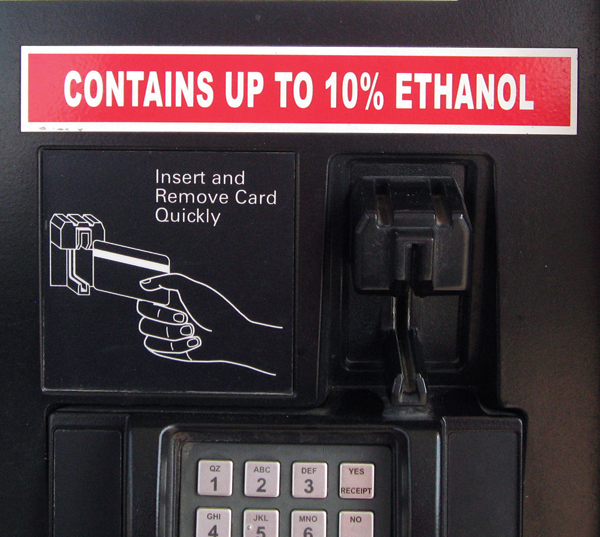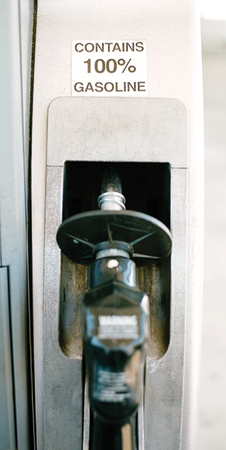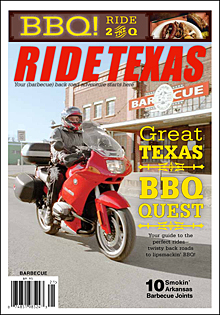
- Words & photographs by Wayne Roth

The fuel that powers our motorcycles is a blend of the gasoline we’ve been using for decades. In the last several years, it also includes ethanol. Yes, ethanol, the very same alcoholic ingredient that eases awkward social situations. Commonly designated E10, the new mix has been blamed for every performance problem imaginable. We’ll examine some of these issues and, for the ones surviving scientific scrutiny, propose a few solutions or ways to avoid them.
Why E10 and what is it?
After congressional passage of the Clean Air Act in the 1990’s, the Environmental Protection Agency (EPA) requires the addition of oxygenates to gasoline to reduce the amount of carbon monoxide and unburned fuel emitted by motor vehicles.In the pre-ethanol era, a petroleum byproduct called methyl tertiary butyl ether (MTBE) typically provided that function, but it was found to contaminate ground water. The EPA later mandated that MTBE be replaced by ethanol.

- Ethanol has replaced MTBE as a common fuel additive, but do you know the special implications for your bike?
Ethanol is made from sugars derived from crops, such as corn and sugar cane, through a distillation process. In the USA, corn grown in the Midwest is the principal source; Brazil and other countries utilize sugar cane. Unfortunately, the input energy required to convert corn to ethanol is about 75% of the amount expended when burned. By comparison, sugar cane requires much less fuel to convert. The Energy Independence and Security Act of 2007 provides funding for study of ethanol production from sugar cane grown in Hawaii, Florida, and even our own state of Texas.
Ethanol contains about 34% less inherent energy per unit volume than gasoline, but actually has a higher octane rating of approximately 115 compared to the low 80’s inherent in typical gasoline. At the E10 ratio of 90% gasoline to 10% ethanol, octane is typically boosted by 2 to 3 units. Later on, we’ll cover why this can be important in an older motorcycle.
E10 problems in motorcycle applications
Ethanol is a solvent containing contaminants that can chemically attack metals and cause pitting corrosion. A secondary effect, an increase in fuel conductivity, promotes galvanic corrosion. This is one reason E10 gas is usually deployed in concentrations of 6% ethanol and is limited to a maximum of 10% ethanol.
Ethanol is tough on certain plastics and rubber. Engineering teams work to assure systems are compatible with contact fluids. Most 1980 and later designs anticipated ethanol and employ seals that don’t melt. Pre-1980 fuel systems, however, can be problematic.

- On left: 100% gas / water mixture On right: E10 gas / water mixture exhibiting Hygroscopic nature of ethanol
Ethanol is hygroscopic, meaning it attracts water. At room temperature, E10 will absorb 1/200th of its volume, and this capability drops to about half that amount at -30 degrees F. This brings us to the crux of the E10 problem. When the water content exceeds the absorption limit, either by an extreme temperature change or absorption of additional moisture, water drops out of the solution and accumulates on the bottom of the tank. To make matters worse, some ethanol molecules are also removed from the gas. This effect is called “phase separation.”
Remember the part about ethanol being a solvent? If stale gas has left a varnish coating on the tank walls, ethanol might dissolve some of it and produce a gooey, phase-separated slug of water, ethanol, and varnish at the tank bottom. If the slug is large enough, it can clog fuel filters, injectors, and carburetor needle valves. The engine may then be hard to start, run rough, or stop running altogether.
Another factor is octane loss when the ethanol content diminishes. This may not be a problem for closed-loop fuel injected engines, but carbureted bikes with advanced timing might experience pre-detonation. The best cure is to drain the tank if cumulative phase separation has occurred. Don’t add alcohol-based remedies, as they can’t reabsorb the separated phase sufficiently and can damage seals downstream.
On the subject of gas mileage, ethanol’s 34% energy deficiency is insignificant since it only composes 10% of the fuel, resulting in a mileage loss of around 3%. A headwind, large windshield, or just riding fast will make you refill your tank much sooner than E10 gas will.
E10 avoidance and diagnosis

- The Holy Grail of fuel, the almost-impossible-to-find “100%” gasoline gas.
It’s getting difficult to find non-E10 gas. Check www.pure-gas.org for an ethanol-free station near you. Also, try boat marinas, but be prepared to pay top dollar.
You can purchase ethanol test kits, but it’s easy enough to confirm E10 gas with a clear container and water. Fill with 9/10ths gas and 1/10th water and shake. If after a couple of minutes, the water slug at the bottom is above 1/10th total height, ethanol is present. I tried this with new gas and with 2 year old gas from my drought-grounded boat. Sure enough, the new gas showed a water slug 50% larger than the amount of water added.The boat gas slug was exactly the same volume as the added water, so, evidently, was not E10 gas.
Also of interest, the old gas drawn from the boat was much darker colored, indicating it had oxidized and likely left behind varnish deposits. A fuel stabilizer would have delayed oxidation, although two years in the Texas heat is pushing it. Fuel stabilizers that have received very good independent reviews include STA-BIL Marine Formula, Star Brite STAR TRON, and Chevron Techron.
Prevention
Unless you’re lucky enough to score a hit on pure-gas.org, you’re stuck with E10 gas.
Keep your tank full to avoid condensation problems. Be careful refilling in the rain, and choose filling stations that have high traffic to avoid old water-laden gas. If you’re storing your bike, either add fuel stabilizers and run the engine for 15 minutes or, better yet, drain it. Change your fuel filters periodically and, if you’re rebuilding a carburetor, be sure to buy ethanol-tolerant seals.



